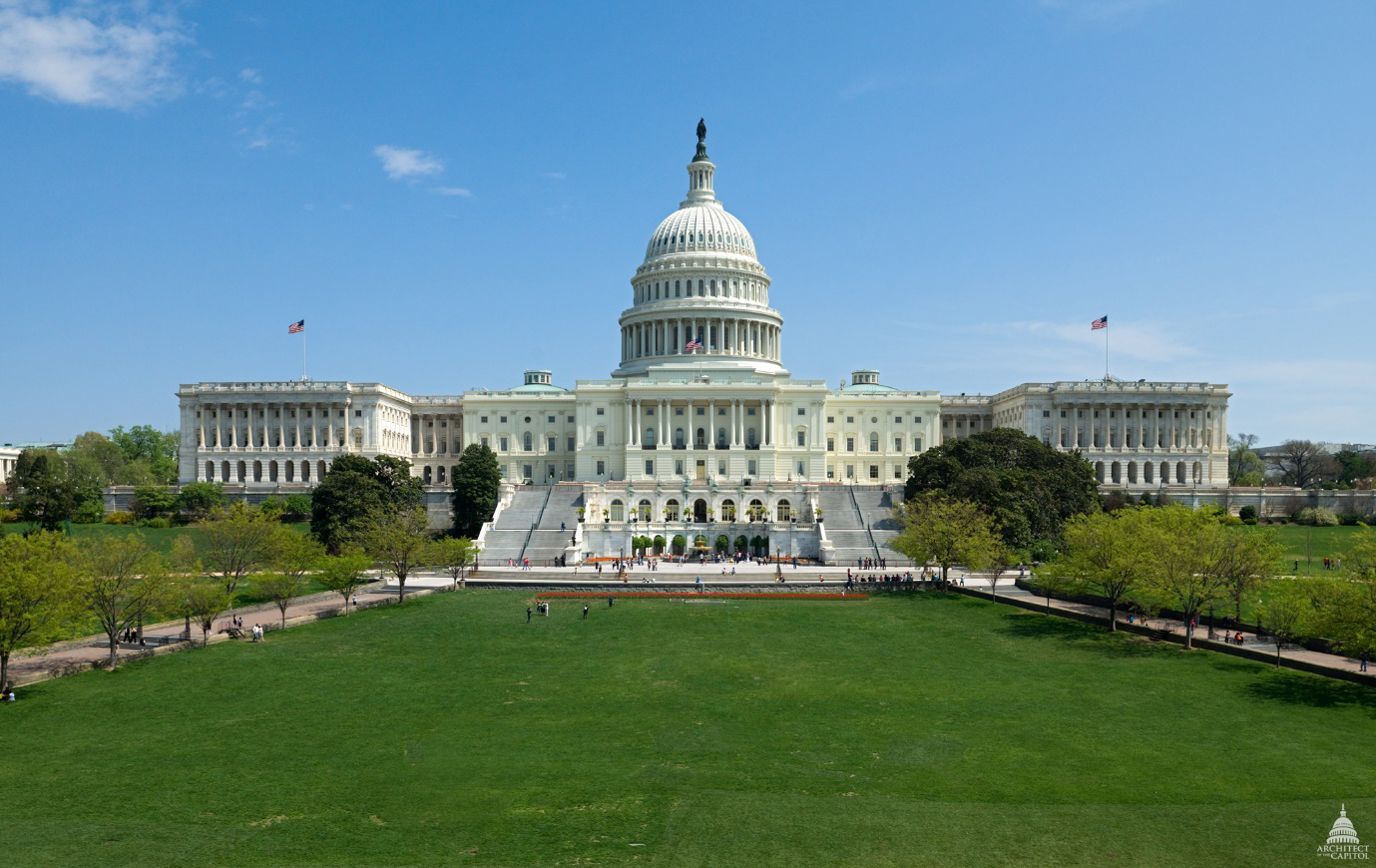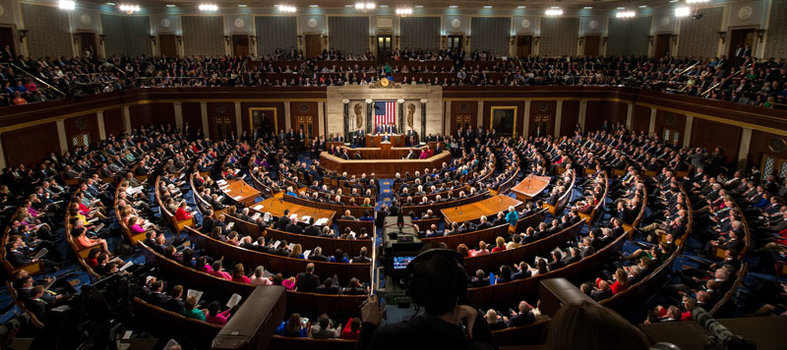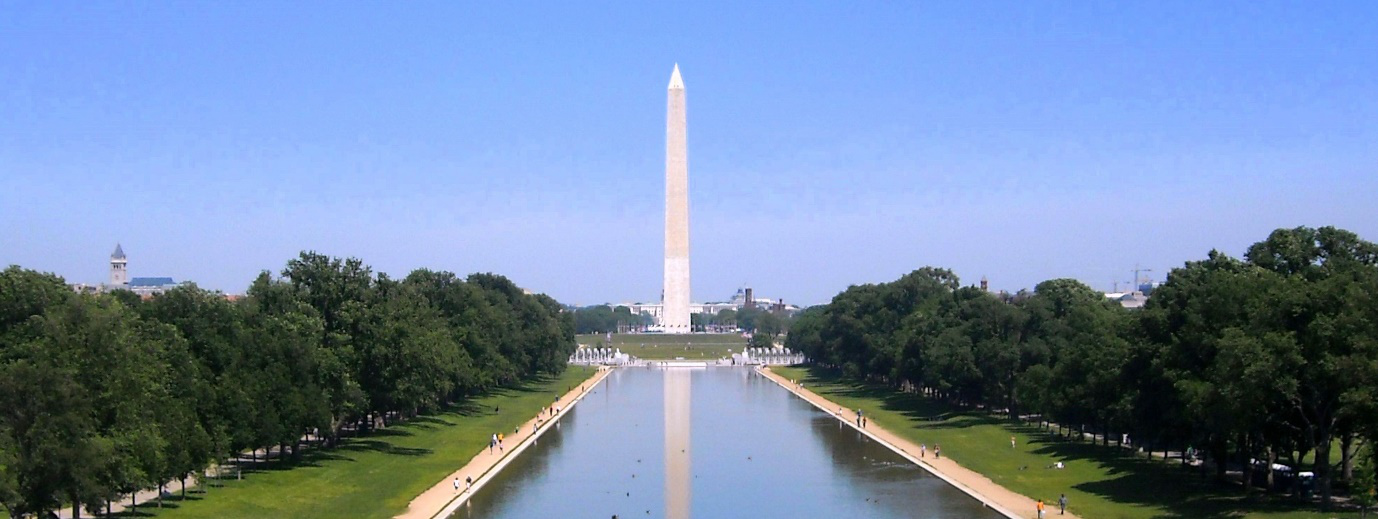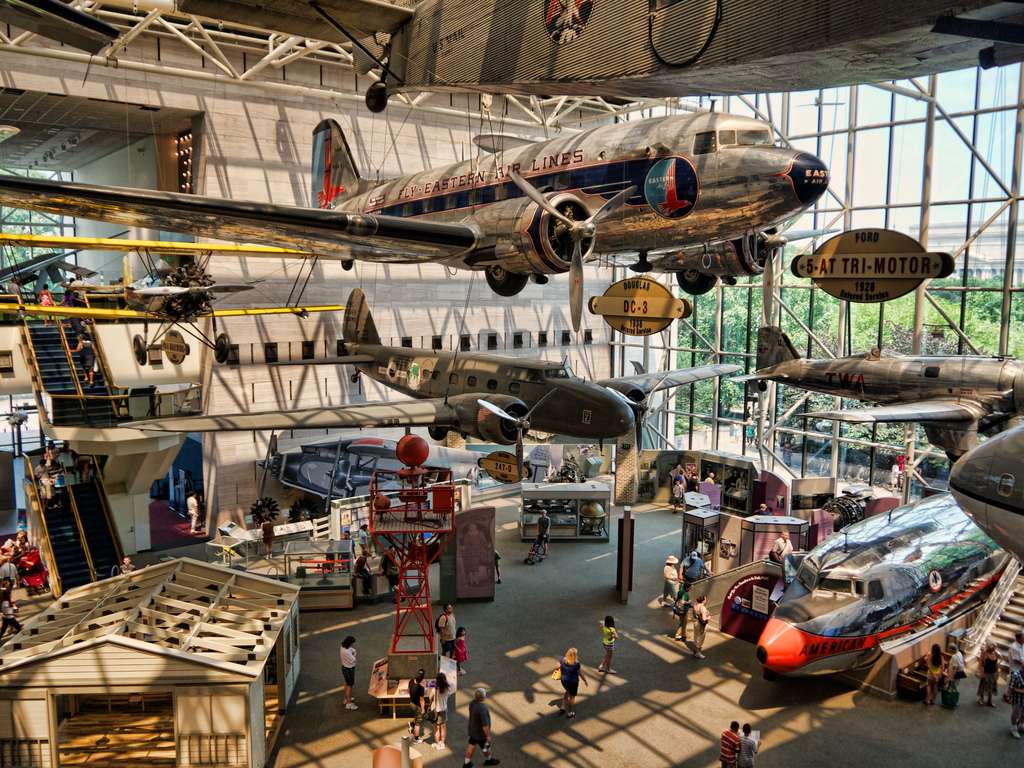Washington, DC, is a metropolitan city with historic attractions, museums, monuments, hotels, restaurants, free annual events, and visitor services unrivaled by any other American city. Since the capital is only nine miles from the university, and accessible by Metrorail from College Park, a visit to the city is convenient and recommended.
When you come to DC, especially if you’re a first-time visitor, it’s likely that the world-famous monuments and memorials will be at the top of your must-see list. Most of these major attractions are located on the National Mall, which extends from the U.S. Capitol to the Lincoln Memorial, with many of them running along Constitution Avenue.
Many of the monuments and memorials are open 24-hours a day, 365-days-a-year and you do not need to make advance reservations. These include the Lincoln Memorial, Jefferson Memorial, National World War II Memorial, the Martin Luther King, Jr. Memorial, the FDR Memorial and the Vietnam Veterans Memorial.
Touring DC’s iconic attractions
★Capitol Hill


Capitol Hill is one of the city’s most popular places to live, with 19th-century rowhouses and a market plus a vibrant nightlife and dining scene. Politicos, young staffers and tourists alike head to the neighborhood both for its government buildings like the U.S. Capitol and the Supreme Court and the surrounding historic, walkable, restaurant-filled blocks.The U.S. Capitol and U.S. Capitol Visitor Center is also one of DC’s most popular monuments and museums and welcomes millions of visitors each year.
Tour the U.S. Capitol via its impressive visitors center, where guides lead small groups under the intricately painted, 180-plus-foot dome and past the dimly lit Old Supreme Court Chamber.
Plan your visit in advance! A public tour of the U.S. Capitol is free and open to anyone who makes an advanced reservation, although there are some same-day tickets available by standing in line at the U.S. Capitol Visitors Center (note that lines will be long during spring and summer). We recommend reserving a reserving a tour date and time, or you can book a staff-led tour through the office of your representative or senator.
All tours begin and end at the U.S. Capitol Visitor Center, open Monday-Saturday from 8:30 a.m. to 4:30 p.m. (except Thanksgiving, Christmas, New Year’s Day and Inauguration Day). Tours typically take about 90 minutes and are fully accessible for people with disabilities.
★White House


The home of every U.S. president except George Washington, the site of the White House on Pennsylvania Avenue was selected in June 1791. The design for the Presidential Mansion (as it was originally called) was decided by a contest, and the winner was James Hoban, a native of Ireland. Designed to be far larger and grander than it is, the building of the Presidential Mansion began in October 1792 and was finished in 1800.
The first president to live in the White House, which, surprisingly, was originally painted yellow, was John Adams. British soldiers captured and burned the building during the War of 1812 when James Madison was in office. Reconstruction was completed in 1817, and President James Monroe and his family were able to move into the building, which was now painted white, as it is today. In 1902, President Theodore Roosevelt designated that the nickname for the mansion would now be its official name, the White House.
Touring the White House requires some advance planning. Public tour requests must be made through your member of Congress and submitted up to three months in advance and no less than 21 days prior to your visit. Tours are filled on a first-come, first-served basis. All White House tours are free.
★National Mall
The National Mall is America’s most-visited national park, where the past, present and future come together. The monuments and memorials in this park honor American forefathers and heroes who paid the ultimate sacrifice in service to this country. From the “I Have a Dream” speech to the AIDS Quilt, the Mall is the national stage where movements and celebrations take place, where people gather to have their voices heard.
But the National Mall is much more than a lesson in history through memorials made of stone. East of the Washington Monument lies world-class museums with something for everyone, including the Smithsonian National Museum of African American History and Culture, the newest addition the Mall’s impressive lineup of museums.
★Lincoln Memorial

The grand Lincoln Memorial towers over the Reflecting Pool, anchoring the western end of the National Mall. The best way to approach the memorial is from the east, by the Washington Monument and the National World War II Memorial. This will put you at the edge of the Reflecting Pool, a shimmering expanse which best illuminates the grand structures honoring our most storied leaders.
Take a stroll toward the memorial and watch as it gradually gets larger. When you stand directly in front, gaze at the handsome marble columns surrounded by greenery, part of a design inspired by ancient Greek temples. There are 36 columns, each one representing one state in the U.S. at the date of President Lincoln’s death. The memorial itself is 190 feet long and 119 feet wide, and reaches a height of almost 100 feet.
Climb the stairs leading to the interior, and look up. There, etched into the wall, is a memorable quote: "In this temple, as in the hearts of the people for whom he saved the Union, the memory of Abraham Lincoln is enshrined forever."
★Washington Monument

Built to honor George Washington, the commander-in-chief of the Continental Army and the first president of the United States, the Washington Monument was once the tallest building in the world at just over 555 feet. The monument to America’s first president still holds the title of world’s tallest stone structure and obelisk.
Maintained by the National Park Service, the Washington Monument is located on the center of the National Mall between the U.S. Capitol and Lincoln Memorial. The easiest way to get to the monument is by taking the Metro. The two closest Metro stops are Federal Triangle and Smithsonian, both on the Blue, Orange and Silver lines. If traveling by bus, take DC Circulator’s National Mall route or ride Metrobus routes 32, 34 or 36. If driving, visitor parking is available on Ohio Drive, between the Lincoln and Jefferson memorials. Note that street parking is often limited near the National Mall.
★Smithsonian National Air and Space Museum

The museum contains the largest and most significant collection of aviation and space artifacts in the world. All components of human flight are on display, including related art and archival materials.
The museum is located on Independence Avenue at 6th Street SW, and admission is always free. Regular hours are 10 a.m. – 5:30 p.m., but the museum stays open until 7:30 p.m. during its extended spring and summer hours.
The easiest way to reach the museum is via Metrorail or Metrobus. The closest Metro stop is Smithsonian, on the Blue, Silver and Orange lines. The 32, 34 and 36 Metrobus routes, as well as the DC Circulator’s National Mall route, will all take you to the Mall, which you can explore in full once you’ve experienced the Air and Space Museum’s wonders. The facility is handicap accessible.
★Citi Open – July 27 – Aug. 4

The District’s signature professional tennis tournament returns to Rock Creek Park for its 51st edition. Top-tier talent from all over the world will compete for a prestigious trophy, leading to action that you do not want to miss. While the competitors have yet to be announced, expect a star-studded lineup of players to take the court during this DC sporting tradition.
Attachment:Official Visitors Guide of Washington DC





